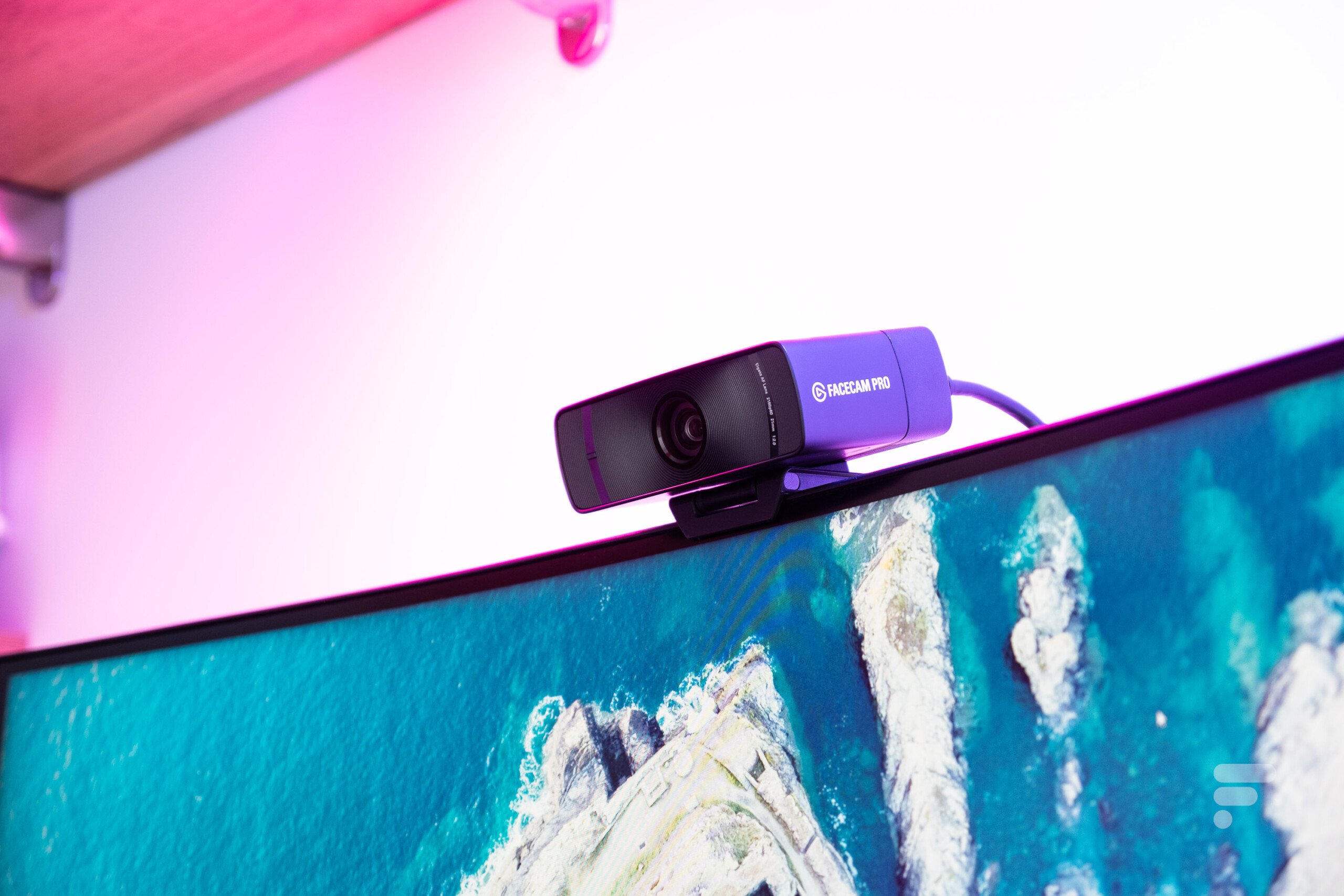After a relatively convincing first 1080p version, Elgato returns to the premium webcam market with the Facecam Pro, the first webcam capable of filming in 4K60.
The Elgato Facecam Pro webcam intends to replace the traditional camera used by the vast majority of streamers. The objective is simple: to offer excellent image quality in a dedicated device that only requires a simple USB connection. 3.0.
Relatively imposing, the Facecam Pro is equipped with a Sony sensor capable of filming in 4K60 and allows fine adjustment of all its parameters using the Camera Hub utility. Elgato product obliges, it can be controlled entirely using a Stream Deck.
This new webcam signed Elgato is available at the recommended price (and very high) of 350 euros and will therefore have to be particularly convincing to justify such a price.
A very imposing webcam, for no reason?
The few photos that accompany this test speak for themselves: the Facecam Pro is impressive. It’s quite simply one of the biggest webcams on the market and we don’t really understand why it’s so imposing. Nothing inside the device seems to justify such a size. However, once installed, its size will not matter.
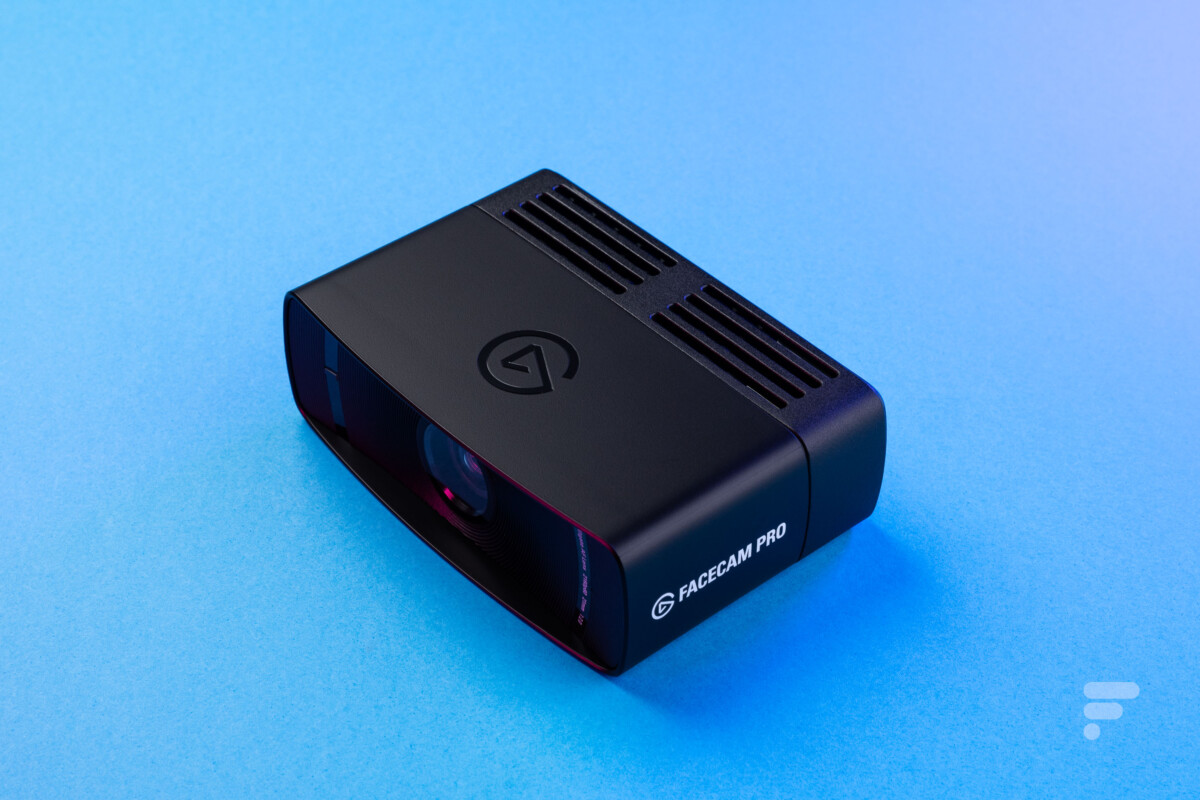
Elgato offers us a neatly built camera here. If its chassis gives pride of place to black plastic, the assembly is impeccable and the Facecam Pro exudes quality. It comes in the form of a fairly flat rectangular pebble, whose textured front face hosts the imposing Sony sensor in its center. An indicator LED is also present on the left side of this facade.
As often, Elgato is sober since the camera does not include any particular appendage that would give it a little more personality. Only a few logos and inscriptions come “brighten up» the all-black shell of the device.
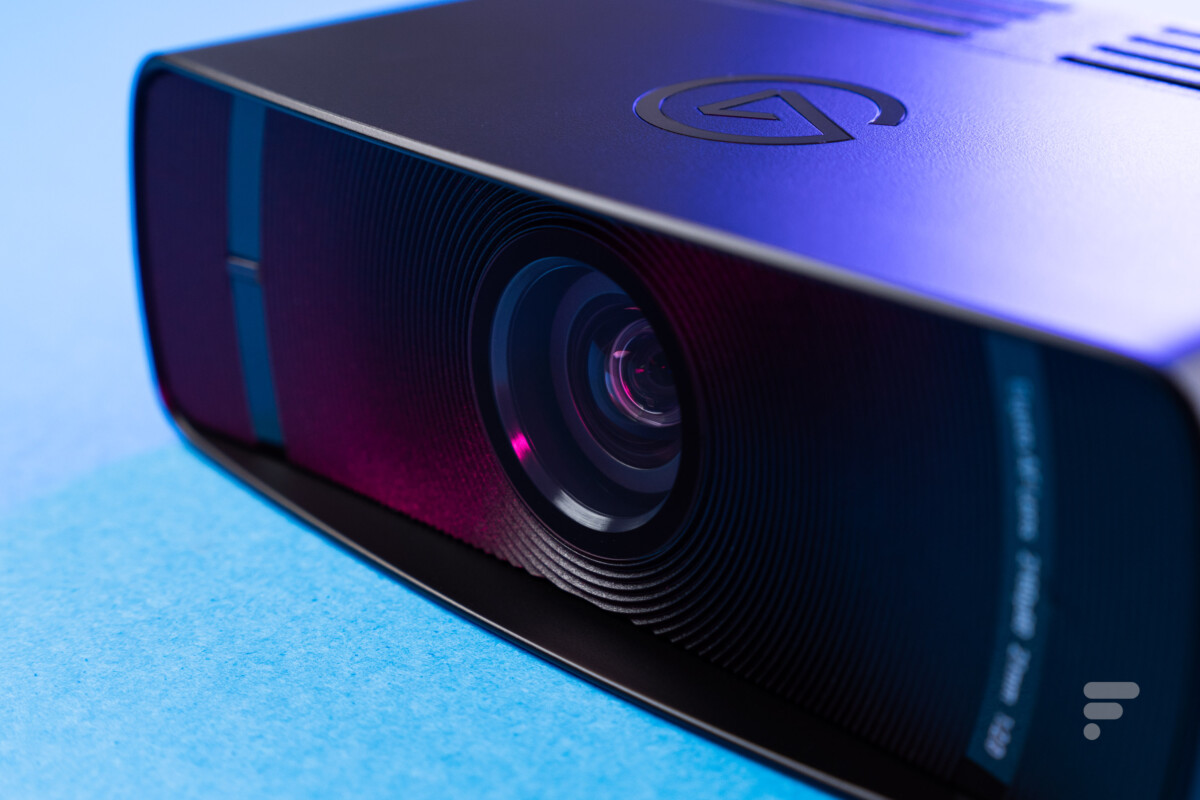
Unlike the first Facecam, the Pro model ignores the lens cover. This is doubly damaging, because it will takesupport“Having such a large device pointed at you all the time and that it would have been simple to integrate one, given the size of the device. In the same way, one could regret the absence of an integrated microphone, although this type of device is intended above all for users already equipped on the sound part.

The installation of the Facecam Pro is facilitated by the presence of a standard screw thread which adapts to all supports. Elgato saw fit to supply one with the camera, allowing the choice of mounting it on top of a monitor or leaning it on any surface. It is effective and simple to set up.

Source: Edouard Patout for Frandroid

Source: Edouard Patout for Frandroid
When the camera is positioned above a screen, its support simply makes it possible to manage its vertical inclination, to better frame the subject. Note in passing that its imposing USB C cable can disrupt the correct installation of the camera by its rigidity, and that it is, in fact, not very discreet.
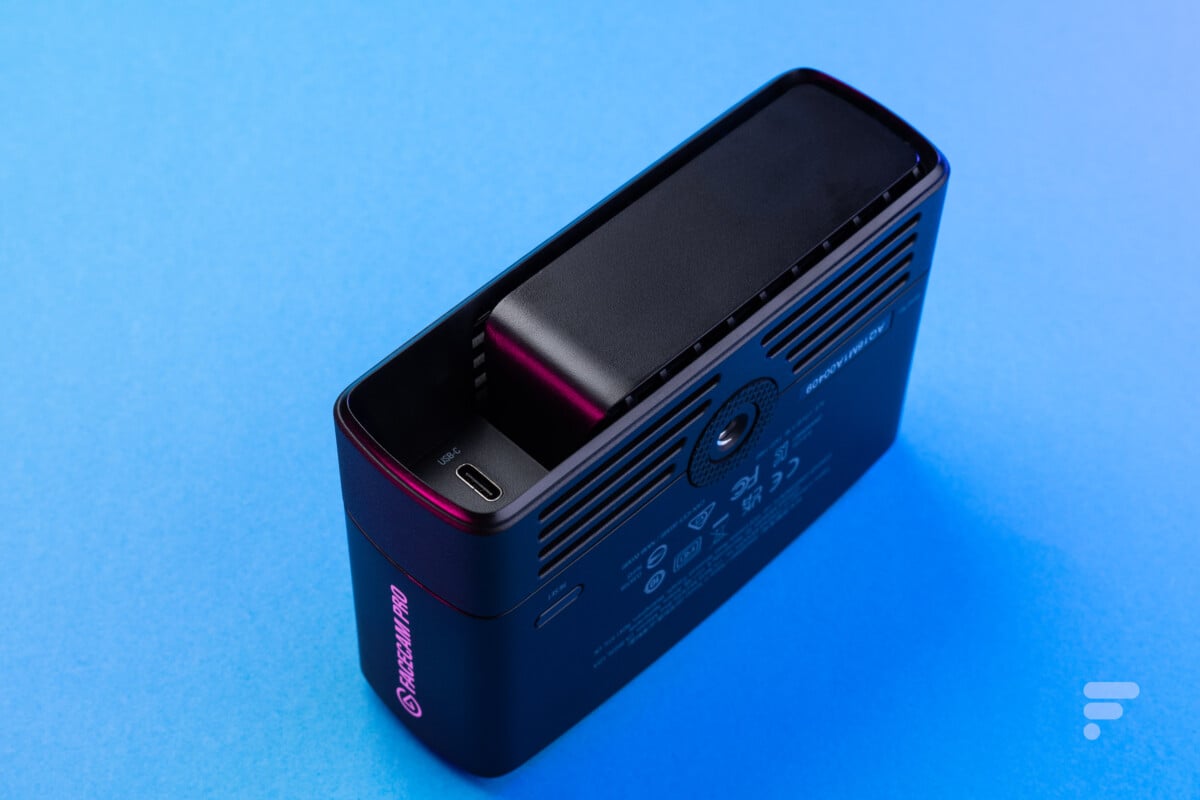
The connection is thus limited to a simple USB C to USB C cable, of sufficient length to position the camera above a screen. On the other hand, the brand has not seen fit to add an adapter to USB A, which can quickly pose a problem, as USB ports are rare on current computers.
Complete software, even better with a Stream Deck
The Facecam Pro is controlled by the Camera Hub software, already used for the standard Facecam. The latter allows you to configure all aspects of the camera finely and interfaces with the Stream Deck to control the Facecam Pro at your fingertips.
The first tab allows you to manage the framing of the image, which Elgato calls Pan-Tilt-Zoom (PTZ) by misuse of language. The camera is completely unmotorized and the utility simply crops within the image to give that illusion. Very practical and completely justified because of the 4K sensor, this function is accompanied by four customizable presets to change framing on the fly.
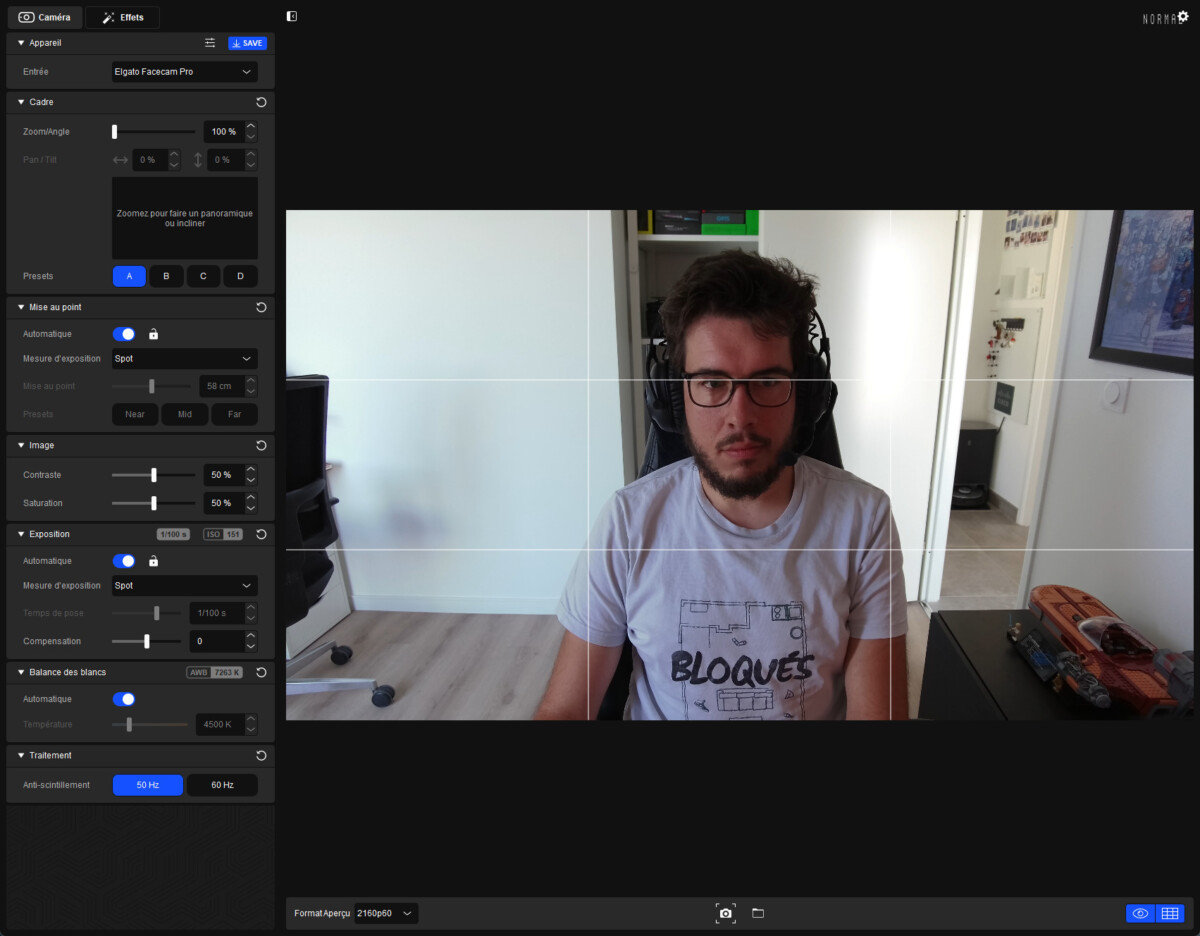
Focusing is also customizable with a choice between an automatic mode and a manual mode. This second choice will be more relevant for use in streaming or videoconferencing since the subject does not have to really move, especially since the depth of field leaves a little freedom of movement.
Similarly, Camera Hub offers significant freedom in adjusting exposure. If it can be left on automatic, activating the manual mode frees up the adjustment of ISO and shutter speed to adapt the image according to our preferences.
On a more creative note, contrast, saturation as well as white balance can be customized. A tab dedicated to effects and based on NVIDIA graphics cards is also available. In particular, it is possible to crop the subject to hide or blur the background, like what some videoconferencing tools offer.
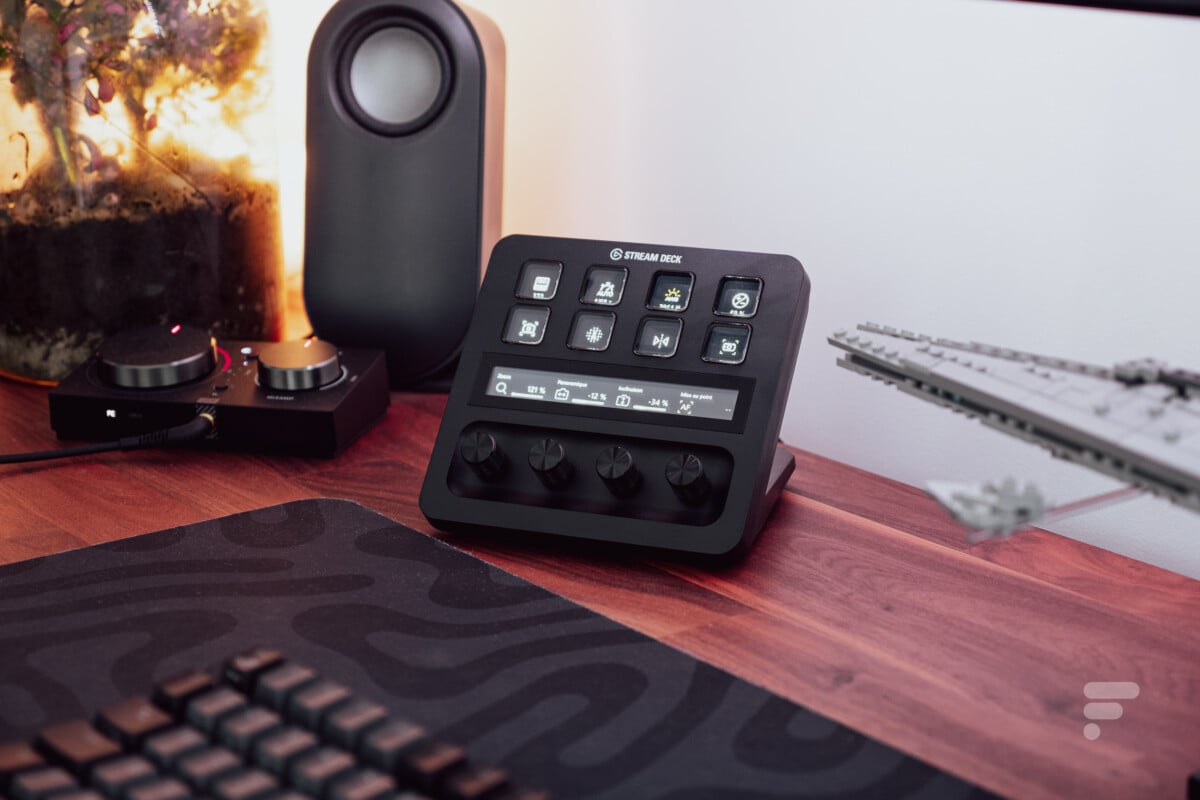
Elgato makes a point of making its products work in concert and the Facecam Pro is no exception. It thus benefits from extensive compatibility with the Stream Deck, and in particular the Plus version. It’s simple, all camera settings can be managed directly from the Stream Deck. The potentiometers then make sense to adjust the zoom, the focus or the framing. Clearly, after a few initial configurations within Camera Hub, everything can be done using the Stream Deck.
Good image quality, after some adjustments
With its Sony Starvis sensor, the Elgato Facecam Pro is unique for one particular point: its ability to film in 4K at 60 frames per second. The sensor offers an aperture of f / 2, with a focal length of 21 mm in full format equivalence. The 90° viewing angle is intended to be wide enough to properly frame the subject and allows, thanks to the zoom functions, to create different framings to give a little more “lifeto capture.


In daylight, the Facecam Pro does well and delivers a clear, low-noise image. However, we quickly notice some difficulties in the exposure which tends to be a little too low at the level of the subject with a bright background. Similarly, white balance will require manual adjustment to be truly correct. The whole tends to draw a little too much towards the red.


Switch the automatic exposure to “Spotallows you to find a more correct exposure of the face, but will have the direct consequence of overexposing backgrounds that are too bright (white walls in our case). In the same logic, slightly lowering the temperature will allow you to find more correct skin tones. Note in passing that, and this is a good thing, the exposure is automatically adjusted with each change of framing.
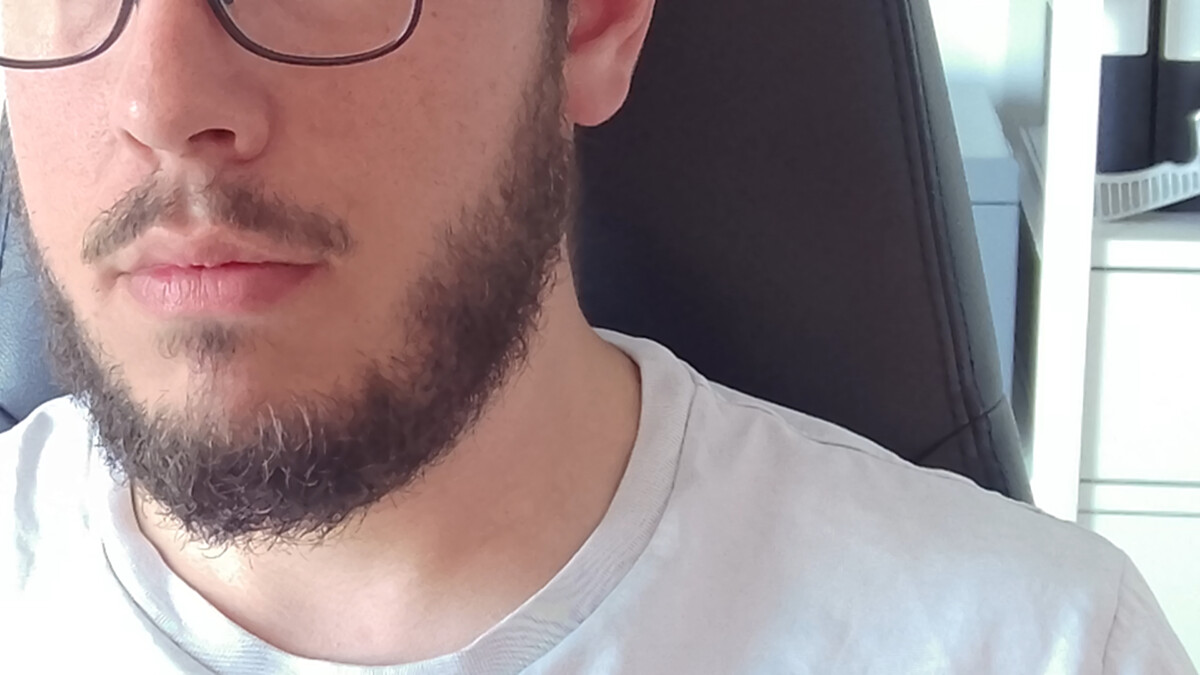
In low light, no miracles, the image quality drops quite sharply and the noise is much more present. However, the exposure improves here since the luminous backgrounds are, in fact, less… luminous. Finally, by adding real lighting, to get closer to the use for which the camera was designed, the results are much more convincing, with much better exposure and colorimetry. Under these conditions, and after a few adjustments, the Facecam Pro plays its role perfectly!


In short, out of the box, the Facecam Pro is just “OK“. It will require some adjustments, especially to its exposure, to ensure the best results. This is where the Camera Hub application makes sense thanks to the many settings it offers. It will eventually reveal its full potential in a controlled environment, which it was designed for.


The autofocus is also convincing, although it suffers from a traditional breathing effect with each change. The sensor, however, takes the information quickly and adjusts the focus very quickly. To compensate for small defects in focus, it remains fortunately possible to lock it, which is not meaningless for a webcam.
Price and availability of the Elgato Facecam Pro
The Elgato Facecam Pro webcam is available at the recommended price of 350 euros.
Buy the Elgato Facecam Pro webcam
